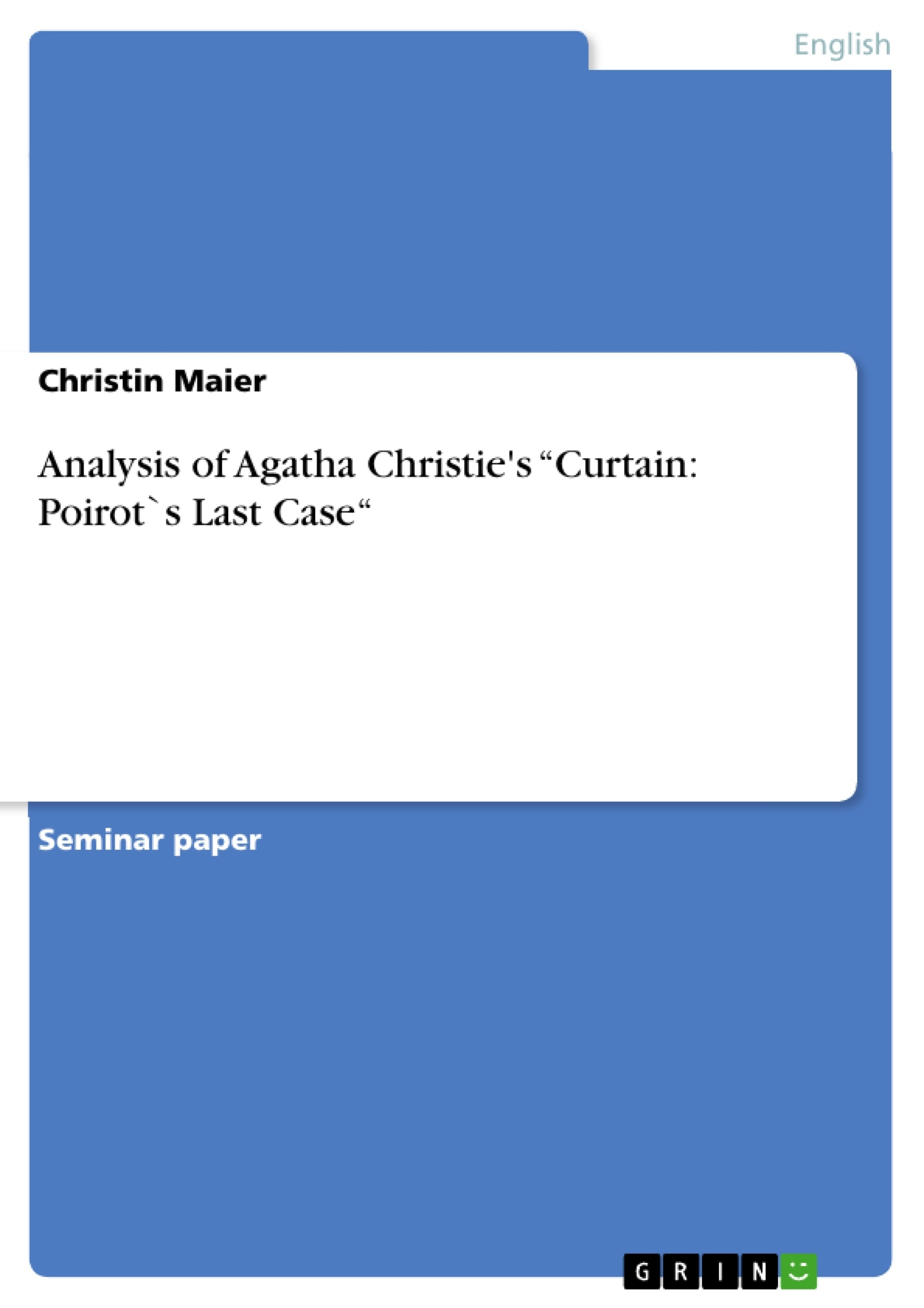Agatha Christie’s novel "Curtain: Poirot`s Last Case" was written in the early 1940s. It is her last Poirot novel. The author intended to publish the novel posthumously. Therefore, the manuscript was kept in a safe for over thirty years. "Curtain: Poirot's Last Case" was finally published in 1975 since Agatha Christie “changed her mind and allowed the publication before her death, which followed only about three months later”. Christie lived from 1890-1976. She was born in Torquay, Devon, and died in Wallingford, Oxfordshire. Agatha Christie is regarded as the Queen of Crime all over the world. She has written 80 crime novels which include short story collections, 19 plays and six additional novels which were published under the pseudonym Mary Westmacott. “Her books have sold over a billion copies in English with another billion in 100 foreign countries. She is the most widely published author of all and in any language, outsold only by the Bible and Shakespeare.”
Agatha Christie’s novels are often related to the Golden Age of Detective Fiction, which is mostly dated between the two World Wars. One of the characteristics of the Golden Age of Detective Fiction is that the so far dominated short form of detective stories has been replaced by the long form of detective stories. Additionally, the majority of the novels, which were written during this period, are so-called “Whodunnits” where the reader does not know who the villain is, until the ending of the story. Curtain was written during the Second World War and does not only show characteristics of the Golden Age of Detective Fiction but also shows modern traits of crime fiction since the detective “fails to protect his society from criminal contagion or from the dangers of the criminal voice” as seen later in this assignment.
Table of Contents
- Introduction
- The construction of the plot
- The Figure of the Detective and his Method of Investigation
- Characterization and Character Constellation
- Narrative Strategies and Stylistic Features
- Legal and Moral Aspects
- Bibliography
Objectives and Key Themes
The main objective of the work is to analyze Agatha Christie's novel Curtain: Poirot's Last Case, focusing on its plot structure, detective character, narrative strategies, and thematic elements. The novel's unique position as the final Poirot case and its posthumous publication make it a particularly interesting subject for study.
- The construction of the plot and its intricate design
- The role of the detective and his methods of investigation
- The portrayal of characters and their relationships within the novel
- Narrative techniques and stylistic features employed by Agatha Christie
- The exploration of legal and moral themes within the story
Chapter Summaries
The novel opens with the arrival of Captain Hastings at Styles Court, a country estate where he and Hercule Poirot have previously solved a case. Poirot, now suffering from heart failure, informs Hastings that he has identified a serial killer, known only as "X," who is among the guests at Styles. Poirot believes X will commit another murder.
As Hastings investigates, he discovers that Miss Cole, one of the guests, is connected to a previous murder case. Hastings also witnesses a shooting incident where Colonel Luttrell accidentally wounds his wife. He suspects a pattern between these events and the cases Poirot previously described.
The plot thickens as Hastings becomes increasingly concerned about his daughter Judith's relationship with the mysterious Major Allerton. In a moment of misguided anger, Hastings plans to poison Allerton, but falls asleep before carrying out his plan.
Later, Mrs. Franklin, a guest at Styles, is found dead from poisoning. The investigation suggests she committed suicide, but Hastings remains suspicious. Norton, another guest, is later found dead from a gunshot wound, and Poirot indicates that he may have been murdered.
Poirot himself dies shortly after, seemingly from natural causes. Hastings, however, suspects Poirot was killed by X. Despite Poirot's careful preparations, crucial clues are missing, leaving Hastings with unanswered questions.
Keywords
The key words and focus topics of the work are: Agatha Christie, detective fiction, Curtain: Poirot's Last Case, Hercule Poirot, murder mystery, plot structure, character analysis, narrative techniques, legal and moral themes, Golden Age of Detective Fiction.
- Quote paper
- Christin Maier (Author), 2009, Analysis of Agatha Christie's “Curtain: Poirot`s Last Case“, Munich, GRIN Verlag, https://www.grin.com/document/287659



